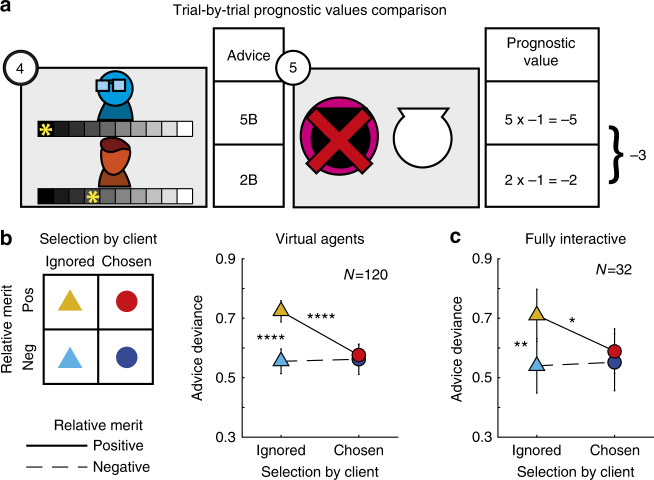Fig. 3.
Relative merit effect on advice. a At the end of each trial participants could evaluate and compare their and the rival’s advice prognostic value. The difference in prognostic value was accumulated to form the participants’ relative merit. b Our best-fitting model included a free parameter for accumulation rate for differences in prognostic values, for relative merit and for the interaction between merit and client’s selection. We used the individual estimated parameters to evaluate the trial by trial relative merit and divided the trials to four conditions according to the selection by client and relative merit variables. Advice deviance was highest (i.e., most overconfident) when participants’ positive relative merit conflicted with the client’s choice to ignore them and demonstrated a significant interaction effect. c The same pattern of behaviour was replicated in the fully interactive experiment, where three human participants played the roles of a client and two advisers (two-tailed paired t-test comparisons: * P < 0.05, ** P < 0.005, **** P < 0.00005, error bars indicate SEM)

